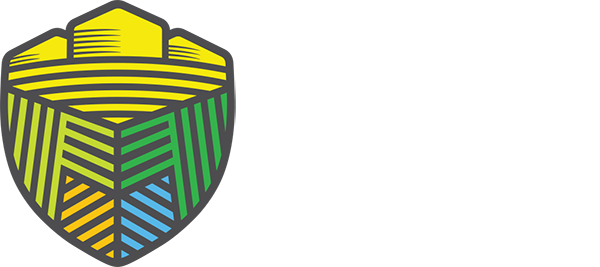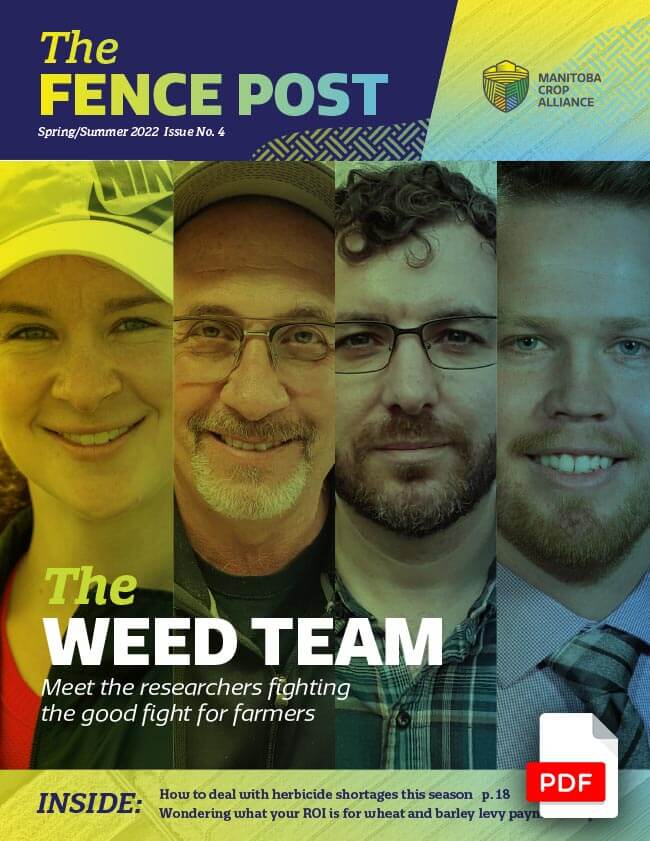Rob Graf is a winter wheat breeder with Agriculture and Agri-Food Canada (AAFC) at the Lethbridge Research and Development Centre. Rob completed his bachelor of science in agriculture at the University of Saskatchewan (USask), specializing in agronomy, and earned his PhD under the supervision of Gordon Rowland at the USask Crop Development Centre. Rob began his career in 1987 as a wheat breeder with the Saskatchewan Wheat Pool and was there for 12 years. During that time, he was part of a team that developed three Canada Western Red Spring (CWRS) wheat varieties, including McKenzie and Prodigy. In 1999, Rob joined AAFC as a winter wheat breeder. He currently lives in Lethbridge with his wife, Linda, and is looking towards retirement in October.
Tell us a bit about what you’ve worked on at AAFC throughout your career.
Our mandate is to develop improved winter wheat varieties for Western Canada. In the AAFC breeding program, we’ve concentrated on varieties for the Canada Western Red Winter (CWRW) milling class and, to a lesser extent, feed varieties for the Canada Western Special Purpose class. In a general sense, the objectives of the breeding program are to improve agronomics, disease resistance and end-use quality. The agronomic issues we focus on are increased yields, improved winter hardiness (both prime considerations), increased lodging resistance (strong straw in a range of height options), a range in maturity and good test weight.
As for disease resistance, in Western Canada there are five priority-one diseases that must be addressed for variety registration. These include the rusts (stem, leaf and stripe), Fusarium head blight (FHB) and common bunt. Disease resistance was one of the objectives I felt really needed to be concentrated on. In 1999, disease resistance was only starting to be deployed in the winter wheat varieties being registered. Farmers had to make the choice to grow a variety with leaf and stem rust resistance (important for Manitoba), or a variety with bunt resistance (particularly important in southern Alberta). At that time, FHB wasn’t on the radar for winter wheat, but it was a major issue in spring wheat. That’s one of the reasons why winter wheat acres in Manitoba exploded in the 2000s (the escape from FHB and orange wheat blossom midge) along with the variety CDC Falcon, which had short, strong straw, early maturity and high yields; farmers liked it. Today, we have varieties that have good resistance to all five priority-one diseases and are also working on resistance to other diseases and pests. It took about 20 years, but we’ve been able to get there through some really excellent collaborations with nurseries and testing sites across Western Canada.
A key element to developing varieties that work well in Manitoba was a collaboration with Anita Brûlé-Babel at the University of Manitoba. Her team planted a large leaf-and-stem-rust screening nursery for us that I rated and made selections from every year. We don’t normally see leaf and stem rust in Alberta, so that made a huge difference for Manitoba farmers. The other critical aspect of our collaboration was the provision of an FHB screening nursery. Without that, we couldn’t have made the advances that we did. For example, Emerson, which is still a popular variety in Manitoba, was identified as an FHB-resistant line in those nurseries. Without that nursery, we wouldn’t have known. It’s collaborations like these that are so crucial to the success of any breeding program.
Quality is the third pillar of our breeding program. When I started, the major improvements CWRW needed included increased protein concentration, gluten strength and flour water absorption. Over time, we’ve gradually increased protein concentration and gluten strength, and we’re finally starting to make progress on flour water absorption. My hope is that over the next few years, we will see a substantial increase in winter wheat flour water absorption.
Upon my retirement, Harwinder Sidhu will be taking over the winter wheat breeding program. I’ve been mentoring him for the last year, getting him up to speed on the program, and I think he’ll do an excellent job. He is a recent PhD graduate from the University of Guelph, where his PhD project was focused on genomic selection for FHB resistance in winter wheat.
What got you interested in this area of work?
I grew up on a farm near Humboldt, SK. I remember when my dad changed varieties from Neepawa to Napayo and then Sinton. It was intriguing to me that Napayo had awns (most varieties at the time were awnless), as I thought only barley was awned. A couple of years later, we grew Sinton, which was interesting because it had better leaf rust resistance, which I could actually see in the field. I also remember a wet harvest period in the mid-1970s when Sinton sprouted in the swath and Napayo didn’t. It was those genetic differences in the varieties that got me intrigued, and I guess the rest is history.
What is the best part about your job?
There are a lot of things! I really enjoy seeing the genetic variability when we cross various parents. I also like the interaction with farmers and the industry to hear what their problems and concerns are, and then trying to come up with breeding solutions to address them. When I’m able to deliver a variety that addresses at least some of those concerns, and it becomes accepted and farmers like the variety, it’s a great feeling.
What can you say about the value of farmers providing funding and support to your organization?
The funding farmers provide to breeding programs is absolutely vital to their success. When an industry group approaches AAFC with issues they need to have addressed and are willing to invest, it means a lot. Governments have many priorities for funding, and that goes for farmers as well. The funds received for breeding and pathology programs, and some of the more basic research, are absolutely vital to the successes that we’ve had and to the continued success and prosperity of the industry and Canada.
How does that farmer funding and support directly benefit farmers?
The funding support has hugely impacted the number and size of populations that I can handle as a breeder. Breeding is a numbers game. You need large numbers to find those rare segregants that bring together all of the traits that are needed by the industry. It allows us to handle a lot more material, gives us the ability to put trials at important locations, and it supports disease screening nurseries and quality analysis. From a Manitoba perspective, that has been crucial in developing varieties with resistance to FHB, stem rust and leaf rust.
What is one of your major accomplishments over your career?
Within the winter wheat program, one of the major wins was the registration of Emerson. Essentially, we moved from most winter wheat varieties being quite susceptible to FHB, to the first wheat in Canada that was rated resistant. That was certainly a bit of good luck, but as breeders we need to be able to set things up to identify those advances.
What opportunities lie ahead for winter wheat breeding?
Winter wheat has a bright future. From the standpoint of climate change over the medium term, it’s likely that our winters will get milder. Winter wheat provides the opportunity to use early spring moisture that farmers are waiting to dry off prior to spring seeding. Why not use that moisture to build yield? With the possibility of hotter summers, because the crop matures earlier, it may also be able to escape some of the heat stress we get in late July and August. It certainly has an excellent opportunity to fit into our environment, perhaps somewhat better than it has in the past. Not to say that it doesn’t fit now, but I think as time goes on, farmers will see it as a more attractive option. Or at least I sure hope so!
What are you looking forward to most about retirement?
There is a number of things. I am looking forward to taking a break, visiting more with family and friends, and my wife and I enjoy camping and plan to do more of that together. Our granddaughter just turned one, so we look forward to spending more time with her, as well. We’d also like to do some travelling in Canada and the United States, and longer term in Europe and other places.
Who or what inspires you?
There are a lot of people who inspire me! My colleagues and all of the important work that they are doing inspires me every day. Young people and their optimism for the future also inspires me.
What is the best piece of advice you’ve received?
There are a couple of things, both from my dad. “Pray and live like you’ll die tomorrow; work like you’ll live forever.” The other was, “If you see something that needs doing, don’t wait for someone else to do it.” Those are gems of wisdom I can’t argue with.
Follow @grafwheat on Twitter!
To meet other researchers involved in winter wheat breeding and agronomy, check out our profiles on Curt McCartney and Brian Beres!















